#through the years: Mette Marit
Text


Through the Years → Mette-Marit, Crown Princess of Norway (819/∞)
13 February 2024 | Crown Princess Mette-Marit of Norway attends the state banquet held in honour of the President of the United Republic of Tanzania, Samia Suluhu Hassan, at the Royal Palace in Oslo, Norway.
#Crown Princess Mette Marit#Norwegian Amethyst Necklace Tiara#Norway#tiara#2024#unknown photographer#through the years: Mette Marit
6 notes
·
View notes
Text

📷 Kongehuset
🇳🇴 Crown Prince Haakon and Crown Princess Mette-Marit of Norway
Wednesday, March 29, 2023
“Tonight, the Crown Prince couple got to experience the music carving from Setesdal in Bykle Gamle Church - a musical tradition that was inscribed on the UNESCO list of Verda's intangible cultural heritage in 2019.
This summer, both the Crown Prince and the Crown Princess will be 50 years old. They mark this through five trips with different themes to different parts of the country.”
48 notes
·
View notes
Photo

“Scandinavian royals will go through a changing of guards in the next five years, ten at most, but I think only Fredrick and Mary are ready. Mette-Marit seem ready to be Queen Consort but Haakon and Victoria would struggle to be taken seriously by MPs, don’t even get me started on Daniel.” - Submitted by Anonymous
#crown prince frederik#crown princess mary#crown prince haakon#crown princess mette marit#Crown Princess Victoria#prince daniel
19 notes
·
View notes
Photo
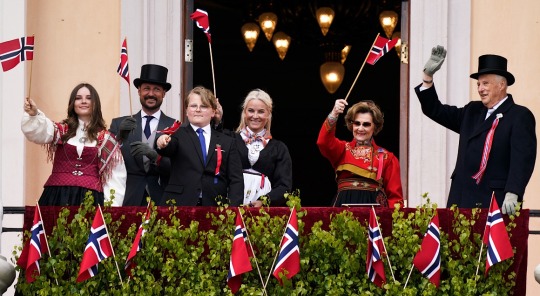
The Royal Court has confirmed the Norwegian Royal Family’s activities to celebrate Constitution Day on 17 May, which have again been modified in accordance with infection control.
Asker
The program will begin the morning of 17 May. The Crown Princely Family will participate in a morning program outside Skaugum Estate in cooperation with the Asker Municipal Council. Following the program, the Crown Princely Family will drive in open cars throughout Asker before making their way to the palace.
The Royal Palace
Similar to last year, the Royal Family will come out onto the balcony at 11:30 AM local time for a 30 minute program. The program will end with the singing of the national anthem and gun salutes. Following conclusion of the program, the King, Queen, Crown Prince, and Crown Princess will drive through Oslo in open cars.
The Royal Yacht
During the afternoon of 17 May, King Harald, Queen Sonja, Crown Prince Haakon, and Crown Princess Mette-Marit will board the royal yacht in order to attend the boat parade in Oslo Fjord. Following the boat parade, the royal yacht will sail to Tønsberg, the oldest city in Norway.
The Royal Family’s activities will be broadcast via NRK and TV2.
#King Harald V#queen sonja#crown prince haakon#crown princess mette marit#Princess Ingrid Alexandra#prince sverre magnus#Norwegian Royal Family#17 mai
25 notes
·
View notes
Text
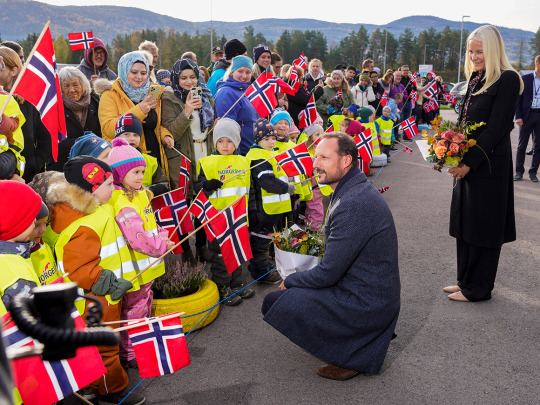





October 13, 2021
Crown Prince Haakon and Crown Princess Mette-Marit visited UngInvest, which is a partner organization of the Crown Prince Couple Foundation. The visit was to mark the 20th anniversary of their foundation. UNGInvest is an alternative to upper secondary education through strengths based education. The organization has been a Crown Prince Couple Foundation partner for the past 10 years.
8 notes
·
View notes
Text
Fic writer interview
I was tagged by @ghostcat3000 an embarrassingly long time ago but I’m only doing this now that I’ve managed to somewhat revive my ao3 activity.
Name: my ao3 is unsungyellowraincoat because I am a bit silly
Fandoms: I’m a migrant bird
Where you post: ao3
Most Popular One-shot: Sleep on it. It’s 500 words and I wrote it in one go which just goes to show how whimsical kudos is and how it’s not something to measure your skill by.
Most Popular Multichap: Let go when you give it. I started it when Skam had only just ended so that’s probably why. But I actually re-read it the other day for the first time in years and some parts were genuinely quite funny! I’d completely forgotten I’d even written this part and I honestly loved it so much now:
The stranger placed a hand on his chest in turn. “I am Eskild,” he chirped, “your fairy godfather and the benevolent patriarch of this house, if you will.”
Isak looked away. The light hurt his eyes, and he wanted to sleep for an eternity.
Eskild drew a pensive breath. “Would you like know what I like to do when I’m sad?” he asked, turning on his laptop. “Just between you and me.”
Isak didn’t respond. He couldn’t see himself be particularly interested in Eskild’s coping mechanisms on a good day, least of all today. Frankly, he was quite certain Eskild would never be able to understand or even notice the pain he was going through. He chirped and he smirked and practically all but radiated gayness, fuck, he even owned a wig— what could such a person possibly know about sadness?
“I take that as a yes,” Eskild said, pursing his lips in a small victory when Isak didn’t have the energy to protest. He was like a superball, always bouncing back.
"When I’m sad, I like to watch royal weddings,” Eskild continued. “Have you seen their hats? Those bluebloods, they can wear anything on their heads— a Kakadu, a dick, doesn’t matter, the show must go on as the Queen herself once said, I seem to recall… Now let’s see, we have our very own Haakon and Mette-Marit, Victoria and Daniel, Madeleine and Mr. Banker, Diana and—well maybe not that one, that one’s a bit of a bummer…,” he chattered, and Isak hid the sudden smile tugging at the corner of his mouth in his palm, instead forcing out a burp that could probably have been measured on the Richter scale.
Eskild clicked his tongue. “Have some manners, boy. And sit down, for heaven’s sake, we are not in a boy choir,” he fussed, only calming down after Isak had awkwardly positioned himself on the edge of the bed. “Excellent. Okay, which one would you like to watch? Speak.”
Isak shrugged, not removing his hand from where it was covering his mouth, quiet hiccups spilling out into the room rhythmically like Facebook notifications.
Eskild placed the laptop down, and folded his hands in his lap. “Tell me, Isak. Do you believe in happy endings?”
“I don’t know,” Isak mumbled against his palm.
A smile spread across Eskild’s face. “You don’t know?” he repeated the words, as though trying to savor their taste. His eyes were bright and twinkling like Cinderella’s gown. “Go wash your hands, because you’re about to find out. Heja Vickan och Daniel; heja kärlek!”
also this part:
Jonas hums, his mouth quirking into a knowing smile.
“You like this guy then?”
“How should I know?” Isak snarls almost defensively.
“Don’t act so offended all the time! Maybe if you stopped bitching for a minute and listened to your heart.”
“Listen to your heart? Should I perhaps also listen to my pancreas and my asshole? Listen to your heart? What kind of shit advice is that?”
“If it twitches more than your dick, chances are you like this… what’s his name?”
“Even,” Isak says, and his heart twitches at the sound.
also this part!!!
“You can’t tell an epic love story without singing! Or do you think the Titanic would’ve had the same impact if Celine Dion’s heart hadn’t gone on and on, hmm?”
Isak looks up at Even though his lashes, fully aware of how smug the smirk on his face must be.
“I thought it was just people wanting to fuck young Leonardo DiCaprio.”
“You clearly underestimate the power of Celine Dion’s heart going on and on.”
“I’d fuck him.”
“Young or old?”
“Young. I mean I’m already fucking the older version.”
“I’m not that old, you take that back!”
“You so loved being compared to him, don’t even try.”
“Okay, I wouldn’t mind it if he played me in a movie, let’s put it like that.”
“But doesn’t he only play the sleazy guys nowadays?”
“You’re saying I shouldn’t get him to play me in my upcoming Hollywood biopic Even Bech Næsheim and the Curse of the Golden Dick?”
“You should get the young Leo to play you. The older one could play me.”
“Oh, so you’re the sleazy guy now?”
Isak’s smile fades.
“I just think that if I were a movie character, I’d be one of the bad guys.”
and this part!!!!
“Some cheesy fucker once said you can’t tell an epic love story without singing.”
“Was he from Nazareth? Long hair, sandals?” Even asks, his grin only growing wider as Isak gives him an exasperated nudge.
“Shut up when I’m trying to ask you something.”
Even lets go of the drawstring, his expression growing serious. “You can ask me anything, I hope you know that.”
The thing is, Isak does know that. It’s part of the reason he wants to ask this question in the first place; the ease of it all that settles in his body whenever Even is around. Whatever it – this – is, it’s simple yet bone-deep.
“Look, maybe I’m reading this all wrong… But I like you—”
“I like you, too.”
“No, I mean I really like you—”
“I really like you, too.”
“Would you please stop interrupting me when I’m trying to ask you to be my boyfriend!”
“I’m sorry, I won’t interrupt you again.”
“What was I even talking about?”
“Something about boyfriends.”
“I was supposed to woo you like they do in your movies.”
“Don’t worry,” Even says. “I’ll make a movie about you. The Boy Who Couldn’t Woo His Boyfriend,” and before Isak can do anything to retaliate Even is tugging him by the strings of his hoodie. “Now come on in, I can’t have my boyfriend stand outside on an empty stomach. What would the neighbors think?”
Isak steps into Even’s space and puts his arms around him. “After my concert? Probably that I deserved it.”
I don’t remember writing any of this!!! It seems like three years is how long it takes for me to be able to enjoy my own writing haha.
Favorite story you’ve written so far: If the wind breathes occupies a special place in my heart because I wrote it as a kind message to myself before leaving Finland for good. I got the title from a poem my dad picked for my grandma’s obituary (I lived with my grandma in the past), so the fic became a sort of goodbye to my past life. Writing-wise I like my newer work better but that story is my favourite.
Fic you were nervous to post: All of them!! Maybe The world of dew is a world of dew because that fandom is massive, there are over 30k words in the goddamn tag. I posted my fic and next time I looked it had already moved to page three. You can’t survive there lol.
How do you choose your titles: Some are from poems, some from songs, some are my own. How they catch the light is a throwaway line from the show that I reused in a different context. I like my titles to complete the fic, like a little key.
Do you outline: Very little! In high school we’d have to submit a mindmap with our Finnish essays and I’d do mine after writing the essay lol. I process things in my head! If you ever see me staring off with my mouth open for long periods of time I’m actually Arranging My Thoughts haha.
Complete: Well I just posted a new fic today so that one.
In progress: Bodies of Water and Hope, I haven’t abandoned it I don’t think. I mean the existential crisis is literally my own existential crisis so I’ve got to finish it as an encouragement for myself haha.
Coming soon/not yet started: I want to write more atots fic because I’m quite fond of them atm. I want to write a reunion scene and a driving scene. I really love driving scenes.
Prompts?: I’m not famous enough haha.
Upcoming work you’re most excited about: I’m just excited to write more Atots fic because I love them and there’s not much of it.
5 notes
·
View notes
Text
The Bunad: roots of a nationalist symbol
The bunad is a Norwegian folk costume which exists in many regional varieties. A symbol of rootedness and belonging both local and national, the bunad is ubiquituous on Constitution Day, 17 May, but it is also used at other festive occasions. Although it is far more widespread among women than men, male bunads have become common in some social circles.
Can anyone wear a bunad? Is it a real bunad if it is made in China? Is it a symbol of origin and roots or a nationalistic symbol?
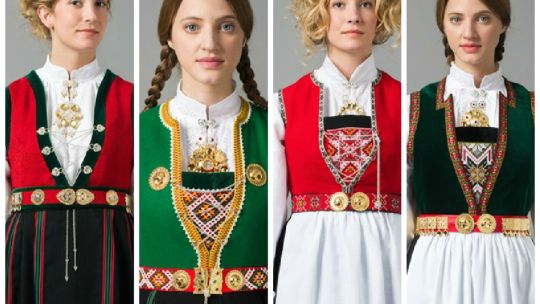
It is estimated that Norwegians own altogether 2.5 million bunads, worth more than 40 billion kroner (€500 million). In other words, one in two citizens owns a bunad, and they are expensive garments with embroideries and filigree silver ornaments, consisting of several components often including aprons, headdresses, scarves or shawls. You could easily buy a few prestigious and beautiful dresses from famous designers for the cost of a single bunad. Moreover, bunad ownership and use has grown fast in the last few decades.
The increased popularity of bunads could be put down to the growing prosperity of the population of oil-rich Norway in general. But this is hardly the whole story. A symbol of Norwegianness, rootedness and regional origins, wearing a bunad is a statement about identity. Non-Norwegians are often puzzled by its widespread use, since folk dresses are associated with minorities in other parts of Europe. Perhaps the Norwegian identity is essentially a minority identity, even though independence was achieved through a bloodless secession from the Swedish–Norwegian union in 1905.

The ongoing story of the bunad is complex and involves claims and counter-claims about authenticity, the feared and respected ‘bunad police’ and a vivid popular discourse about who has the moral right to wear which bunad. The right not to wear a bunad is generally tolerated, but there is no strong and visible cosmopolitan discourse dismissing the widespread love of folk costumes as antediluvian, reactionary, nationalist and possibly racist. Yet there is no consensus concerning which dresses should be classified as sufficiently authentic and what the criteria are and it has led to controversies.
The bunad is a particular kind of festive dress. The term is a neologism based on an archaic dialect word, introduced in urban circles by the author and nationalist activist Hulda Garborg in her pamphlet Norsk klædebunad in 1903. Writing during a feverish phase of Norwegian nationalism just ahead of independence, Garborg argued the need for a truly Norwegian and regional form of formal dress. She collected and systematised what she saw as intact and useful regional bunad traditions, and even designed some bunads herself. Interestingly, Garborg never denied the syncretic and partly invented character of the new, traditionalist folk costume. She nevertheless emphasised its role as a marker of rural, Norwegian identity.

A relevant distinction can be drawn between a bunad and a folk costume. Folk costumes are everyday and festive clothes which were traditionally worn by peasants in southern Norway, and – like certain kinds of peasant food – have been recontextualised and upgraded more recently as formal dress. Bunads, on the contrary, are reconstructed and re-designed – sometimes very nearly purely invented – costumes designed from the early 20th century onwards, and are used at occasions such as Christmas Eve, Constitution Day, weddings and other major social events, although not at funerals: bunads are bright and joyful garments. Some bunads represent minor adjustments (‘upgradings’ and modernisations) of the original folk costume, while the link is less obvious or absent in other cases.
The bunad is an important traditionalist symbol of modern Norwegianness. Most of these costumes are related to regional and minority folk costumes from Central and Eastern Europe, and the German influence has often been commented upon. More importantly, the bunad confirms Norwegian identity as an essentially rural one, where personal integrity is linked to roots and regional origins. However, 18th and 19th century peasants would often wear European-style dress at formal occasions such as weddings, or they might wear a folk costume, which gradually went out of use. In other words, there is a clear element of modern invention, which nobody denies, not only in the currently widespread use of bunads, but also in their design.

What exactly, then, is a bunad? One possible answer widely accepted is: a festive dress associated with a regional Norwegian tradition, accepted by the Bunad and Folk Costume Council as such, and widely recognised as a bunad by the public. Its popularity as a symbol of tradition has increased proportionally with the modernisation and urbanisation of Norway in the last hundred years, thereby saying something essential about the politics and poetics of identity in modern societies, where the quest for rootedness in the past increases with de facto uprootedness.
In contemporary society, many if not most individuals have two, three or four options: they can legitimately wear a bunad designed in the place where they live, in the place where they grew up, or in one of their parents’ places of origin. They cannot, however, legitimately wear a bunad from wherever they fancy. Of course, they could buy it, but their friends and relatives might frown.
Norwegians who live in the heart of urban cities and have no real rural roots are sometimes unaware of people in the heart of Bunad Norway who are deeply offended. These rural Norwegians as they see it have no time for West End ladies who claim Telemark ancestry when they buy the perhaps greatest status symbol of all bunads, namely the expensive and exclusive East Telemark bunad. They also disapprove of people wearing gold chains and earrings with their bunads.

There are frequent conflicts over authenticity framed within the bunad discourse itself. In the valley of Numedal, competition between two alternative bunads actually led to the creation of two distinct factions in the 17 May parade of 2002. Family members fell out with each other; local politicians groped for compromises. One of the alternatives, a simple folk costume, is woven in dark fabrics; the complex, reconstructed bunad sanctioned by the Bunad and Folk Costume Council is much more elaborate and colourful. The defenders of the simple costume argue that the new one, ‘overloaded with silver and embroideries’, is inappropriate and clearly inauthentic for a traditionally poor mountain valley; while the other faction see the simple bunad as sordid and joyless. Both factions claimed that their bunad was the most ancient one. The colourful and expensive alternative won in the end.
The bunad stirs up strong emotions. After the 17 May celebrations in 2001, Queen Sonja was criticised in public for wearing sunglasses with her bunad; in the same year, Crown Princess Mette-Marit was severely reprimanded in the press for wearing a purely invented ‘fantasy costume’ rather than an authentic bunad from her home region. She has since made amends, and now has several bunads to choose between (legitimate in her case, being princess of the whole realm), including an elaborate bunad from her home county of Vest-Agder in the far south of the country. Women are generally advised by the Bunad and Folk Costume Council not to wear makeup and earrings with their bunad.

Because of the wealth of detail, a proper bunad cannot be made industrially in its entirety. This partly accounts for its high market price. Moreover, the knowledge and skill required to make a bunad is considered a cultural, local form of knowledge – a kind of inalienable possession. In the spring of 2002, a conflict erupted between the traditionalists and a young entrepreneur who wanted a slice of the market. This conflict inadvertently brought the implicit ideology underlying the bunad to the public eye. The controversy is still alive today, with cultural arguments overlapping with the economic ones.
What happened was this. A young Norwegian of Chinese origin, who originally worked as a cook, began to take an interest in bunads. He took a bunad course, learning the basics of the craft. Before going into business, he changed his name from Aching to John Helge Dahl, realising that he would have little credibility as a bunad salesman with a Chinese name. (The current owner of the company founded by Dahl is nevertheless called You Hong Bei.)
Dahl founded a company called ‘Norske Bunader’ (Norwegian bunads), and then he did the outrageous thing, namely to contract dozens of Chinese seamstresses in Shanghai to do the stitching and embroidery. The fabrics were sent from Norway, and the completed garments were returned – at a much lower price than that of the Norwegian competition. He built the bunads himself. ‘To most people, it is the quality that counts,’ he says, ‘not who has done the embroidery’. Of course, he can offer bunads at a competitive price.
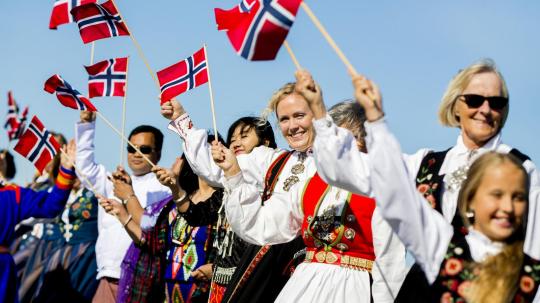
The Bunad and Folk Costume Council reacted strongly against Mr. Dahl, as did Husfliden. At one point the latter threatened to sue him for plagiarism, but since bunad designs are not copyrighted, they were likely to lose a court case. Their argument was that the craft amounted to a locally embedded kind of knowledge which did not travel well, comparing it to dialects. Talking about mass production and industrialisation of bunad production, they argued that the use of foreign labour leads to cultural flattening. The resulting products were said to have no hau, to use the anthropologist Marcel Mauss’s term for the ‘soul’ of an object.
Opinions bitterly divided people. Many who defended the traditionalists said that this concerns ‘personal knowledge’. Bunad embroidery was a kind of handwriting. They argued that when anyone can take a pattern, send it abroad, and make a good profit from the product, people will ask: ‘What is it that I am spending one or two months’ salary on?’ Many argued that this kind of garment would feel alienating, and that it would not satisfy people’s emotional need to build their own history into the garment.
Another argument concerns the low salaries in China, claiming that it was immoral to hire ‘underpaid women’ to do this kind of work. Dahl’s Shanghai seamstresses were paid what he described as a good salary in China, but which is a fraction of a comparable Norwegian salary. Yet others have said that it may be acceptable to employ immigrant women living in Norway, who may have assimilated some local skills, but not to employ foreign women living abroad.

Although the Dahl case was spectacular in that it simultaneously brought out both accusations of racism and controversy concerning criteria for authenticity, his business innovation was less original than it might seem. Several producers admit that they outsource parts of their production to the Baltic countries and elsewhere where wages are low, and even Husfliden has admitted that parts of their bunads are made industrially because of the high cost of labour in Norway.
The anxieties voiced by the critics of the outsourcing of bunad production are threefold: In a thoroughly neo-liberal society (anyone can wear what she wants; anyone can design and make bunads anywhere in the world), national identity suffers because regional roots are severed; economic interests suffer because prices go down; and the personal or emotional pole of the user suffers since the garments lose their special quality.
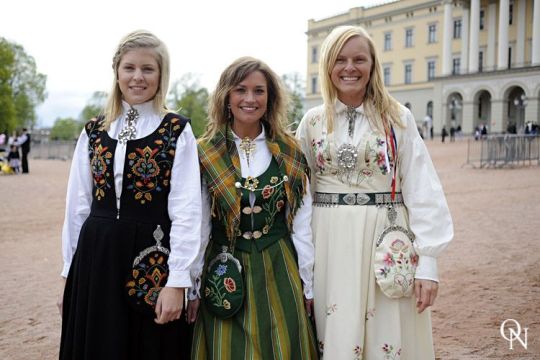
In what exactly does this ‘special quality’ consist? What is the nature of the considerable personal capital invested into clothes?
What is reaped from this investment is a handsome profit, an enhanced sense of community and visible boundaries to the outside world. Cultural property of this kind is intangible, it is legally oblique, and it is poised to lose against both the brisk efficiency of contemporary capitalism and against the individualism of free choice.
So the main question as I see it: is what price your heritage?
Put your secret/sacred knowledge online, and the spell is immediately broken.
This kind of knowledge has to be scarce, localised and difficult to obtain, or it loses its magic qualities. Beyond pricing policies and profits, this is what stirs the souls of the people who care about the national and regional provenance of their bunad. Had they chosen a Dior dress instead, or a pair of blue jeans and a nice T-shirt, the problem would not have arisen.

Still critics argue why all the fuss? The Bunad is no different from what a kilt is to a Scotsman or a lederhosen is to the Bavarian or a sari is to an Indian. Yes and no. Each of these have differing degrees of exclusivity and symbology.
The kilt arguably was an English invention to control the Highland clans. But it became something else - a national symbol of being loyal to clan, crown and country. It used to be people only wore kilts if they had a hereditary claim to that tartan but nowadays no one really cares what tartan you wear (much to the chagrin of older generations). The lederhosen has always been a regional symbol not a national one but has been ‘McDonalised’ to an Oktoberfest fancy dress costume party. The sari is an interesting example that remains a distinctly Indian national symbol but can also now be readily worn by anyone around the world - just as well as I love wearing saris at Indian weddings and when I lived in India. But the Bunad is different because of its own distinct roots that has never left its national borders. The Bunad is a living tapestry and its threads can’t be simply out sourced to other countries.
One’s heritage should never be outsourced. To the anti-traditionalist naysayers I would say that the bunad is a special kind of garment saturated with symbolism and existential significance; it is from somewhere, not from anywhere. It’s Norwegian, born and bred.
226 notes
·
View notes
Text
Top 10 favourite royal wedding dresses
*slides back into the Royal Fandom* I saw these posts going around and couldn’t help but do one myself. Surprisingly it was harder than I thought to find 10 Royal Brides whose dresses I absolutely loved, but here they are:
10. Queen Sonja of Norway
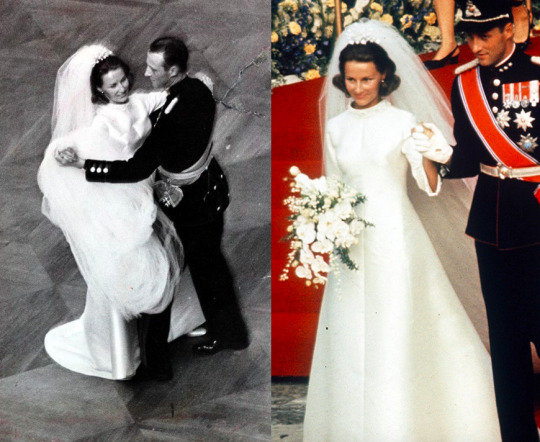
I included Sonja mostly because I felt like I should feature multiple generations, and this style, while not being my personal favorite, was definitely a popular one among Royal brides at that time. And Sonja had by far the best take on the trend. There was something very dainty about it, which balanced the heavy silhouette and fabric quite well, resulting in an overall lovely look.
9. Catherine, Duchess of Cambridge
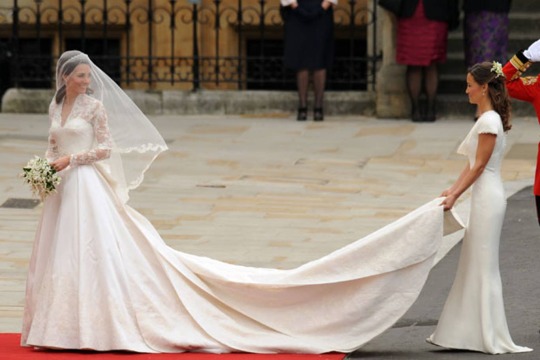
I wondered wether or not I should include Kate on my list. Personally, I don’t think this dress really speaks to me. But objectively speaking it’s so well done, fits her so perfectly (which is rare when it comes to Catherine sorry-not-sorry) and it’s such an instant classic, I had to include it. This dress is fit for the future Queen of England, which is probably the best compliment I can bestow upon it. Plus I loved the little detail at the back.
8. Princess Margaret, Countess of Snowdon
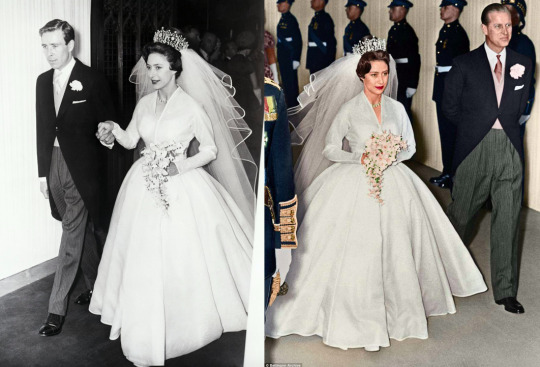
If there was one thing Margaret knew how to do, it was how to bring in the glam and the drama. This is the quintessential Princess Look. Big pouffy skirt, huge veil and even bigger tiara. But it was still tastefully done, well balanced and survived the test of time. The only thing I would ditch is the lining on the veil.
7. Tatiana Casiraghi

The fact that we don’t have proper pictures of this Dress & Cape combo is something I will never get over. But the fact that a few blurry pictures and a sketch are enough to land it on my list, tells you just how much I love it. Absolutely magical winter look

6. Princess Grace of Monaco

Ah, the classic of the classics! One of the most famous wedding dresses of all time, it served as inspiration to brides all over the world - including other Royal Brides. And it’s not hard to see why. The lace work is stunning, the shape is timeless and the fitting perfect. Grace Kelly was always going to be a beautiful bride, even if she showed up in a towel, but this dress made her an absolute vision.
5. Princess Caroline of Hanover

Three monegasque brides in a row? Don’t mind if I do. Caroline’s choice was a bit unusual, but such a beautiful one. An absolute boho dream! Every element - dress, embroideries, lace, flowers, headpiece - came together effortlessly, to create one of the most unique Royal Bridal looks I’ve ever seen. It also ended up influencing her daughter’s beautiful wedding dress years laters, which made it even more special
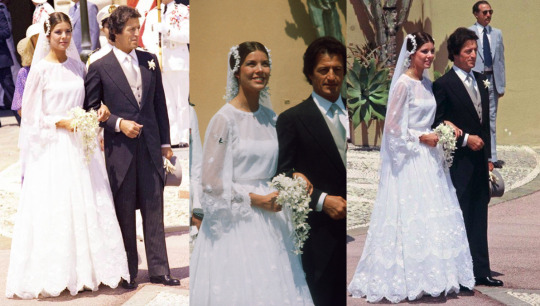
4. Princess Madeleine of Sweden

I have one problem with Made’s dress and that is the fact that the bust didn’t fit perfectly, especially when she moved (big disappointment coming from Valentino). Everything else was absolutely perfect. Like Margaret, Madeleine knows how to look like a Princess! The lace was absolutely stunning, the feminine hemline helped bring the dress and train together and made it lighter, and the combination of the neckline with slightly open back made her look radiant. Pair it with jewelry and tiara hair only accessible to the swedes, and you have a bride to remember.

3. Crown Princess Victoria of Sweden
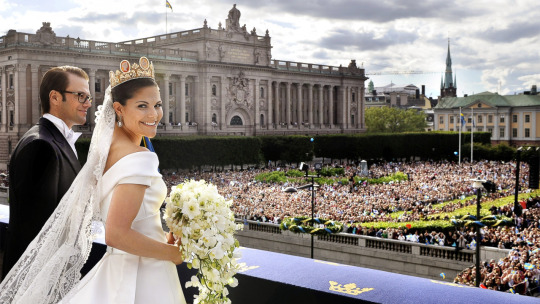
And we reach the podium! If Madeleine was every bit the Princess bride, then her sister was Regal. Im not always the biggest fan of Victoria’s style, but everything about her wedding look worked. Her simple yet imposing dress. The way she pulled off the Cameo tiara (a beautiful piece, but by no means an easy one to wear, especially not on your wedding day). The combination of modernity and tradition. Make no mistake - this was the wedding of a Queen. Oh, and her huge smile all through the day didn’t hurt either.


2. Meghan, Duchess of Sussex
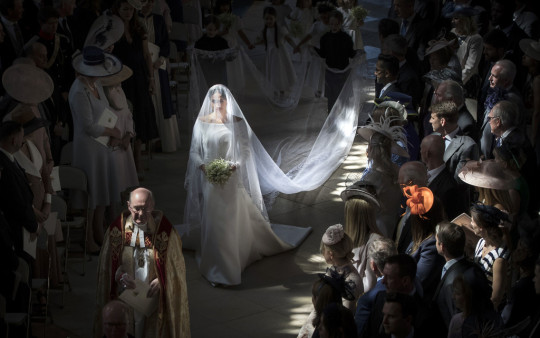
Ah, Meghan, where do I even begin? If this was our only change to ever see her in a tiara, then boy, did she make it a memorable one. I feel like the pictures don’t do this dress justice (hence why I used gifs), but she was simply glowing! It fitted her modern, sleek and minimalist style, just as well as the Royal world that she was entering. The simple silhouette looked perfect against the intricate veil and heavier tiara, without ever overwhelming the bride. It was truly Meghan wearing the dress and not the other way around. This is one for the history books

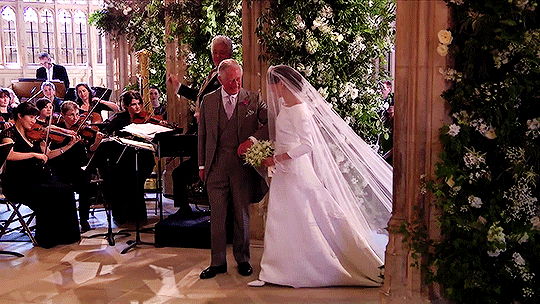

1. Crown Princess Mette-Marit of Norway

The only “bad” thing about this dress is that it’s 19 years old and therefore we don’t have HQ pictures of every single detail. The gown and the veil were so simple, light and ethereal, it feels like they were magically conjured or assembled by birds, like in Cinderella. Everything just flows beautifully down her body and down the aisle. MM has always done things her way - we’re talking about the Future Queen who didn’t wear makeup on her wedding day! - and that’s why her fairytale look is my ultimate winner


Im sure this post comes as a total shock to my football followers, but I had so much fun reminiscing while putting it together. Im happy to realize that my favorite brides were also the happiest, the ones that were truly themselves, the ones who had to fight for their marriages and who seem just as in love today and they did when they wore their dresses. Maybe i have to try and do these things a bit more often
#british royal family#swedish royal family#Norwegian Royal Family#monegasque princely family#kate middleton#duchess of cambridge#Duchess of Sussex#meghan markle#Crown Princess Victoria#crown princess victoria of sweden#Princess Madeleine#princess madeleine of sweden#crown princess mette-marit#mette-marit#royal wedding#royal wedding dress
87 notes
·
View notes
Text
Royaltyspeaking's Top 10 Favorite Royal Wedding Gowns
This list was harder to make than I thought. Turns out I actually dont like a lot of royal wedding dresses very much.
Also, I had a much better written post that I tried to upload a few days ago but Tumblr wouldn't post it and it disappeared into the abyss instead. So I did my best trying to replicate it but I got annoyed and kind of rushed through it...enjoy
#10- Diana, Princess of Wales

Is this the most beautiful gown? No. But I saw this dress in person and ever since I've had an emotional attachment to it. It's honestly a lot nicer in person and there are so many small details that the cameras couldn't pick up.
#9- Queen Margrethe of Denmark
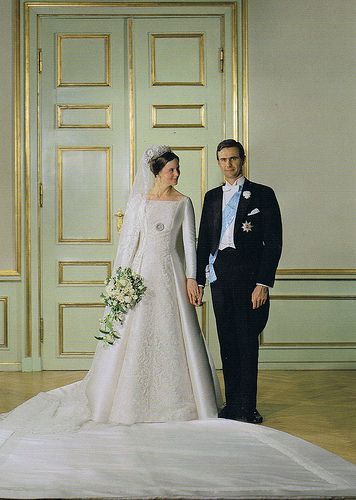
I love the simplicity of this gown and I love how Margrethe added her personal flair with the diamond Daisy brooch.
#8- Lady Sarah Chatto
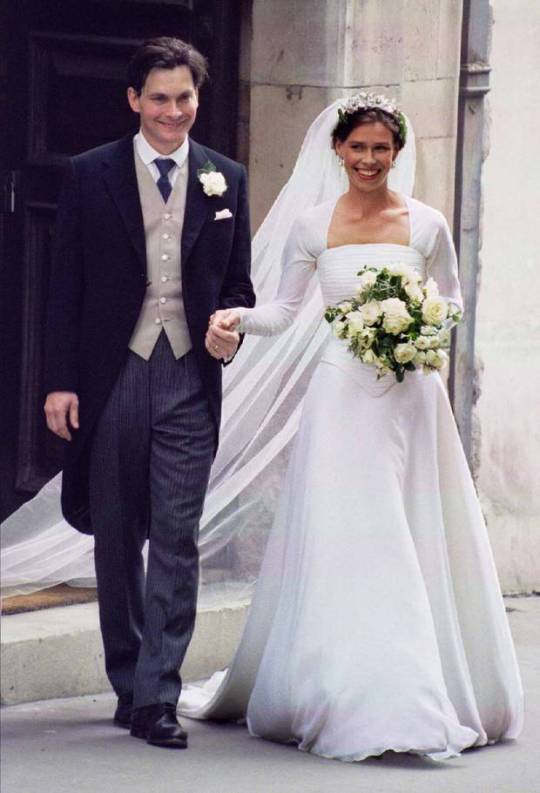
I love all of the layers of chiffon, its light and airy, and it moved so beautifully. I also love how timeless this is which is no easy feat for a wedding gown worn in 1994.
#7- Princess Margaret
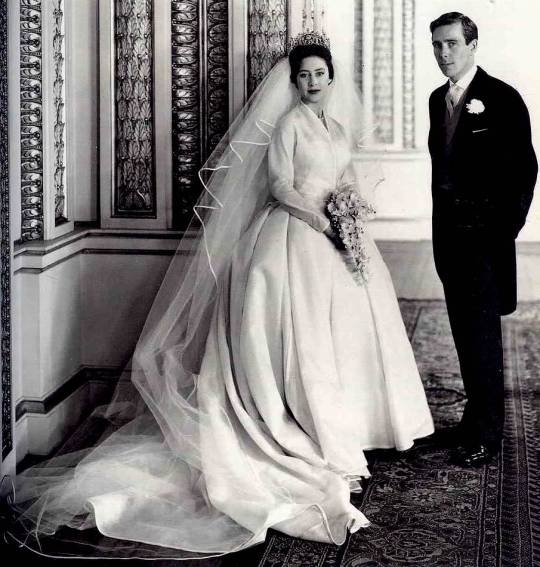
Again, I love the simplicity and I love that Margaret's grand tiara was really allowed to shine.
#6- Princess Eugenie (reception dress)

I wasn't going to include reception dresses on this list but this one is too good to not include. I'm in love with the way that the skirt moves and I adore the draping of the bodice. I also love the peachy shade of the dress.
#5- Princess Eugenie
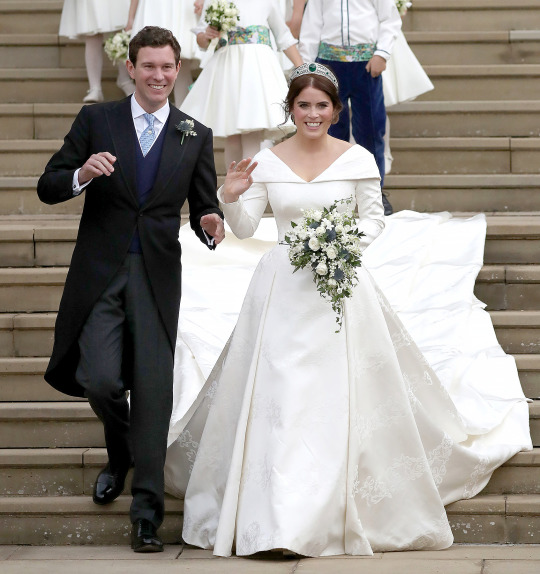
Eugenies style has always been very hit and miss so I wasn't sure what to expect from her wedding gown but she killed it. I love the pleating on the skirt and the bustle in the back. I also really love that she requested a low cut back in order to show off her scoliosis surgery scar. The folds of fabric on the shoulders and the loose pointy sleeves aren't my favorite but those are small critiques to an otherwise excellent gown.
#4- Crown Princess Mette-Marit of Norway
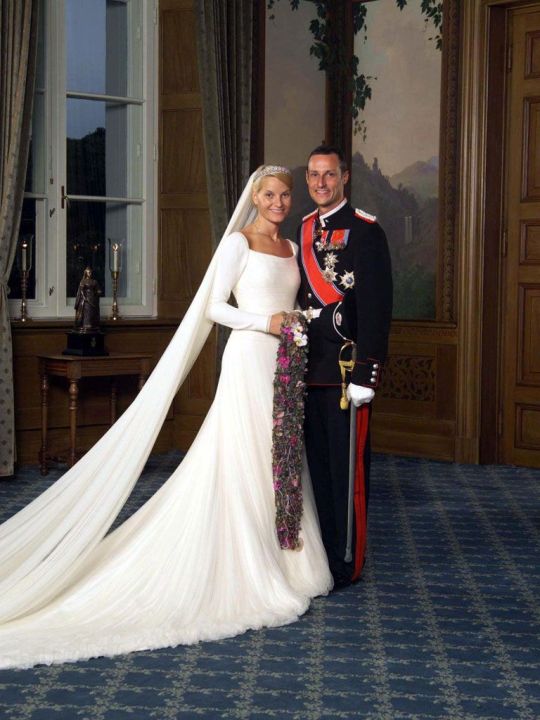
This is how you do modern yet timeless. I love the fluffy skirt and the use of chiffon in place of a stiffer fabric like we normally see with grand royal wedding gowns. This dress is so timeless too, it's hard to believe that it's been nearly 20 years.
#3- The Duchess of Sussex

I was honestly disappointed by Meghans look when she first stepped out of the car, but as soon as the veil fanned out this look had my heart. I absolutely love the simplicity of this, it is exactly what I expected Meghan to wear and it's what I would wear if I married a prince.
#2- Queen Maxima of The Netherlands

I absolutely love the neckline of Maximas gown and the clean lines and choice of fabric. I'm not a big fan of lace but I really like how the lace from the veil is incorporated into the pleats of the gown. I also really like that the train blended so well with the dress instead of being tacked on like an afterthought.
#1- Crown Princess Victoria of Sweden

I didn't like this dress for a long time. I thought that it was too stiff and too simple. But as time went on, I started to love this the more that I looked at it. I love that Victoria chose a clean, modern gown that really let the Antique veil and Cameo Tiara shine. I also really adore that this dress let Victoria shine, your focus is on the bride, not necessarily the gown. Victoria and Daniel will celebrate their 10th anniversary in just under two months and this dress has aged incredibly well.
#royal wedding#top 10#princess diana#princess Margaret#lady sarah chatto#princess eugenie#meghan markle#duchess of sussex#harry and meghan#crown princess victoria#crown princess mette marit#queen maxima#royal wedding gowns
43 notes
·
View notes
Text
Week in Review: Oct 29 - November 4

OCTOBER 29
- Crown Princess Mary attended a presentation for this year’s Christmas stamp
- The Duke and Duchess of Sussex visited Maranui Cafe to talk about mental health; visited Abel Tasman National Park; and visited Courtenay Creative
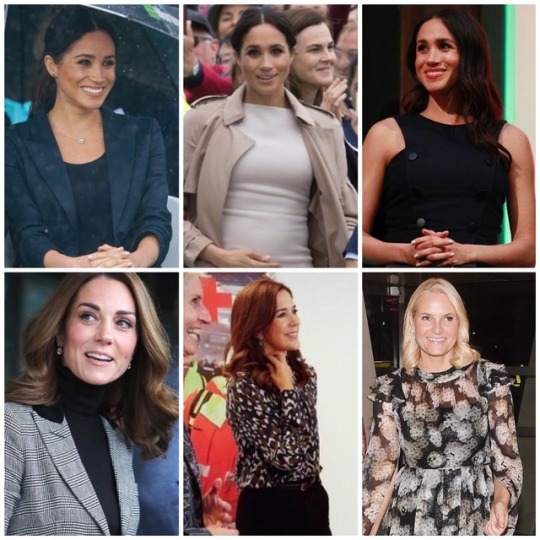
OCTOBER 30
- Meghan and Harry attended the unveiling of The Queen’s Commonwealth Canopy; visited Pillars, a charity that supports children with incarcerated parents; and attended a reception at the Auckland War Memorial Museum
- The Duchess of Cambridge (along with the Duke) visited Coach Core
- Mary met with members of The Mary Foundation and the Red Cross to work on the Vaerkut project
- Crown Princess Mette-Marit and Crown Prince Haakon attended the Nordic Council gala

OCTOBER 31
- Meghan and Harry attended a welcome ceremony; visited Rainbow Springs and saw baby kiwis; and took a walk through Redwoods Tree Walk
- Catherine visited the Imperial War Museum
- Queen Maxima paid a visit to the Council of State
NOVEMBER 1
No public engagements today.

NOVEMBER 2
- Maxima paid a visit to the 311 Suicide Prevention Center
NOVEMBER 3
There were no public engagements today.
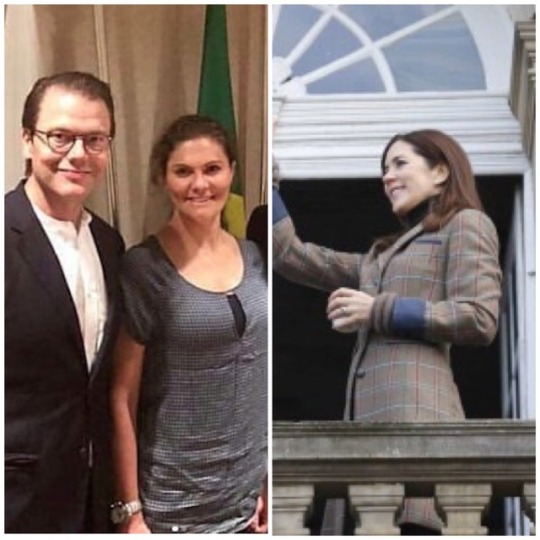
NOVEMBER 4
- Crown Princess Victoria and Prince Daniel made an unofficial visit to the consulate in Brazil
- Mary attended the annual Hubertus Hunt
#duchess of sussex#meghan markle#duchess meghan#duchess of cambridge#kate middleton#crown princess victoria#catherine middleton#queen maxima#duchess catherine#crown princess mette marit#crown princess mary#week in review
10 notes
·
View notes
Text
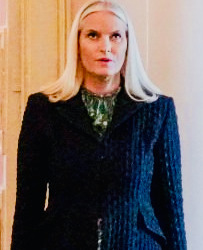

Through the Years → Mette-Marit, Crown Princess of Norway (818/∞)
13 February 2024 | King Harald V of Norway and Queen Sonja of Norway, Princess Astrid, Mrs Ferner, Crown Princess Mette-Marit of Norway and Crown Prince Haakon of Norway pose with Tanzanian President Samia Suluhu Hassan during the president's official state visit at the Royal Palace in Oslo, Norway. (Photo by Ole Berg-Rusten /NTB/AFP via Getty Images)
#Crown Princess Mette Marit#Norway#2024#Ole Berg Rusten#NTB#AFP via Getty Images#through the years: Mette Marit
6 notes
·
View notes
Text
Sports Wear: Between Fashion, Innovation and Sustainability
Sport is an important part of many people’s lives—as both recreation and entertainment. It is also a sizeable industry with political and economic ramifications in today’s world. Within the last half-century or so, sports wear has become a driving force for new trends in fashion and for textile innovation. This special issue of Fashion Practice was inspired by the “Spandex to Sportstech—Fashion and Innovation in Sportswear” conference, organized in 2011 by guest editor Mette Bielefeldt Bruun at the Danish National Research Foundation’s Centre for Textile Research at the University of Copenhagen.
The stated purpose of Fashion Practice is to provide a site for multidisciplinary treatments of the practices of fashion. “Spandex to Sportstech” was designed as a cross-disciplinary forum for renewed consideration of functional, social, aesthetic and environmental issues connected with sportswear, and some of the papers presented here are rooted in original conference contributions. This journal issue is truly cross-disciplinary, beginning with fashion history, represented by Michael A. Langkj?r with “Urban Fitness, Gendered Practices, and Fine Art: The Significance of Antonio Lopez’s Sporty Styling of Fashion” and moving on to the sportswear industry itself with its brands and markets, represented by Kristine Holm-Jensen with “Specialized in Sportswear: Transformations of the Generic Knitwear Industry in Post-War Denmark.” Several articles then consider fiber and textile technologies and their design applications. Jane McCann leads this group with her “Sportswear Design for the Active Ageing.” McCann is followed by Deborah A. Christel and Nicole H. O’Donnell with “Assessment of Women’s Plus-Size Swimwear for Industry Applications.” Alicia Potuck, Sarah Meyers, Ariana Levitt, Erik Beaudette, Hong Xiao, C. C. Chu, and Huiju Park complete the group with their “Development of Thermochromic Pigment Based Sportswear for Detection of Physical Exhaustion.” In “What’s the Problem? Odor-control and the Smell of Sweat in Sportswear,” Ingun Grimstad Klepp, Madeline Buck, Kirsi Laitala and Marit Kjeldsberg look at how fiber technologies connect with our social values associated with body odor and its suppression; in doing so, Klepp et al. also mention the issue of sustainability. A forthright appraisal of the problem of sustainability within the sportswear industry is given by an industry representative to Lena Erdnü? in “A Perspective on Sustainability Initiatives of a Swedish Outdoor Brand: An Interview with Lennart Ekberg from Hagl?fs.” Finally, Lauren Downing Peters has contributed a review of the Museum of the City of New York’s 2013 exhibition: “Stephen Burrows: When Fashion Danced.”
A 'tool to empower': The evolution of women's sportswear
Before the advent of designer activewear, women's sports wear ranked low on the list of fashion priorities. But a new exhibition demonstrates that sporting attire has long been a valuable tool for self-expression and an important path towards greater liberation."Sporting Fashion: Outdoor Girls 1800 to 1960" includes about 65 ensembles from mainland Europe, the UK, and the US, ranging from Victorian hunting dresses and couture-level leisure wear to tailor-made team uniforms. Organized by the FIDM Museum at the Fashion Institute of Design & Merchandising in Los Angeles and the American Federation of Arts, the show opens at the Frick Art Museum in Pittsburgh on July 3, before touring nationwide through 2024.
Design innovationGarments from the early 1800s are tailored to strolling in parks, gardening, and ice skating -- easy, acceptable activities for women propelled outside by an interest in horticulture, health and fresh air.
The idea of a woman exerting herself was still taboo: In 1806, an article in the popular British magazine La Belle Assemblée, excerpted in the show's comprehensive catalog, warned that, "the constitution of women is adapted only to moderate exercise; their feeble arms cannot perform work too laborious and too long continued, and the graces cannot be reconciled with fatigue and sun-burning."
That's the outlook for men's sports wear as the fall wholesale buying season gets under way this week. And while merchants and manufacturers have been expressing their traditional optimism as the new lines open, the unknown factors resulting from President Nixon's economic stabilization program have brought a modicum of caution to the trade.
Consumer spending for men's and boys’ apparel amounted to approximately $16‐billion last year, with sportswear a major but undefinable percentage of the total. What is even more significant, however, is that while production of a number of other categories of men's wear, such as suits and dress shirts, declined during the year, sportswear manufacturing was greater in 1971 than ever before.
And while statistics on the sportswear category are not collected by any government agency or trade association, conversations with retailers last week indicated that 1971's volume advances would he continued at the same rapid pace in 1972.
WHY ARE SPORTS BRAS IMPORTANT
Physical activity makes breasts bounce up, down and even in a figure-eight. Continuous and repetitive movements can result in soreness, pain and sagging.
Women's sports bra is made to reduce this movement. Breasts have no muscle, yet without proper support, the skin and Cooper's ligaments (ligaments near the breast which give them their size and shape) can break down and cause sagging. Once your Cooper's ligaments stretch out, they do not bounce back.
It doesn't matter what size breasts you have, everyone experiences bouncing during physical activity. Therefore, every woman, no matter what size she is, should wear a sports bra while running or exercising.
TYPES OF SPORTS BRAS
Compression bras work the way they sound, by compressing breasts against the chest to restrict movement.
Encapsulation bras have individual cups. Each cup surrounds and supports each breast. Most regular bras are encapsulation bras and have no compression.
Combination compression/encapsulation bras combine compression with individual cups and offer the most support.
Bra tanks, also known as shimmels, are tank tops with a built-in shelf bra. These are okay for low impact activities, but not for running.
Finally, there are differences in straps. Spaghetti straps provide less support than wider straps. Racer-back straps are more supportive than both spaghetti and scoop back.
FITTING A SPORTS BRA
You want a sports bra that fits well, both in the band and cups. Overall, your sports bra should feel a bit tighter than a regular bra, however, you should be able to breathe deeply and comfortably. Hook it in the middle and take some deep breaths. Is this comfortable? Good. It should be.
The band shouldn't move. It should fit snugly and comfortably. Raise your hands above your head. Did the elastic band move? If it crept up your rib cage, try a smaller band. If the bra has straps, try adjusting them.
Your breasts shouldn't bulge, pay close attention to any bulging at the top or by the underarm. Furthermore, the cups shouldn't have any wrinkles or gaps. If the cup fabric is wrinkled, try a smaller size.
Make sure there is nothing rubbing or chafing around the armholes, straps, seams, hooks, clasps or anything else. Many sports bras offer adjustable straps. Adjust them to feel supportive, yet not uncomfortable. Furthermore, make sure the straps aren't digging into your shoulders.
Underwires are supposed to sit flat on your ribs, not on your breasts. The front (between the wire) should be against your chest bone.
Luckily, most newer sports bras use high-tech fabrics, including moisture wicking. This can improve breathability and help remove excess moisture from sweat which can cause chafing. Cotton bras will stay wet, this can lead to uncomfortable skin irritations.
For the last step, jump up and down, jog in place, do jumping jacks. If it feels supportive, you're set! If not, keep looking.
How Sportswear Took Over Your Wardrobe
“Sportswear as casualwear is essentially a preppy invention – the carryover from hearty WASP athletic pursuits which gave us the likes of the sweatshirt, sweatpants and letterman jacket,” says Josh Sims, author of books such as Men of Style. “Sportswear was appreciated for being tough and practical.”
Like military uniform, that other stalwart of menswear, mens sportswear set has long been valued for the rugged characteristics it both possesses in itself and indicates in its wearer. And in sport, like war, competition results in game-changing technological breakthroughs. What we wear on the fields of battle and play has advanced more dramatically than what we wear elsewhere. If sportswear is at the cutting edge of fashion right now, that’s because – in technical terms – it always has been.
The current, unprecedented sportswear boom though can also be seen as a pendulum swing away from the hashtag-menswear sartorialism that followed the economic downturn and increased competition for jobs – coinciding with the 2007 airing of Mad Men. As employment rose again, so did jobs that didn’t impose traditional dress codes and a social media-fuelled emphasis on individual creativity.Then there’s the swelling fashionability of fitness, which has given us a legitimate excuse to wear sportswear outside the gym beyond comfort and sheer laziness. Instead of spending valuable time fastidiously parting our hair and folding our pocket squares, we’re throwing on hoodies and baseball caps. And if you’re running around town all day, it makes sense to wear shoes designed specifically for marathons.
It’s arguably the luxury sector that’s setting the pace. Streetwear designers like Demna Gvasalia at Balenciaga and Virgil Abloh at Louis Vuitton are running the show(s), elevating previously utilitarian sportswear to the very height of fashion. T-shirts, down jackets and sneakers, which grew by 25%, 15% and 10% respectively, were “standout categories” in the 2017 Bain Luxury Study.
With its links to skateboarding, surfing and other sports, you could argue that streetwear – whatever that loaded term means – essentially is sportswear. “I’m not sure streetwear is the dominant mode, if you’re talking urban, hip-hop-driven streetwear,” contends Sims. “It’s sportswear with graphics, in effect.
“There’s not much original design in streetwear – unlike sportswear, then and now – and what there is tends to be driven by – ta-da – sport.”
0 notes
Photo
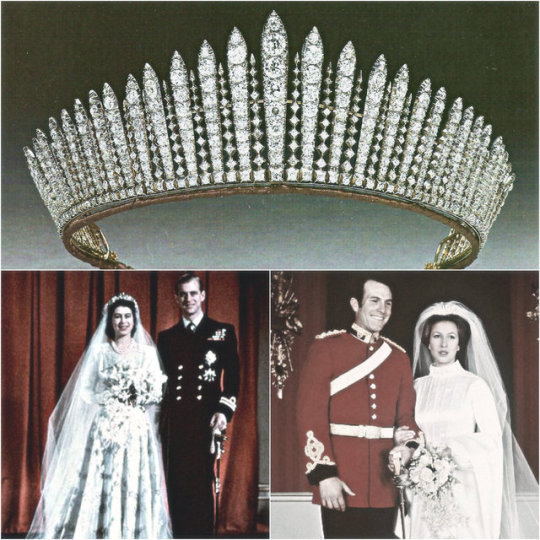
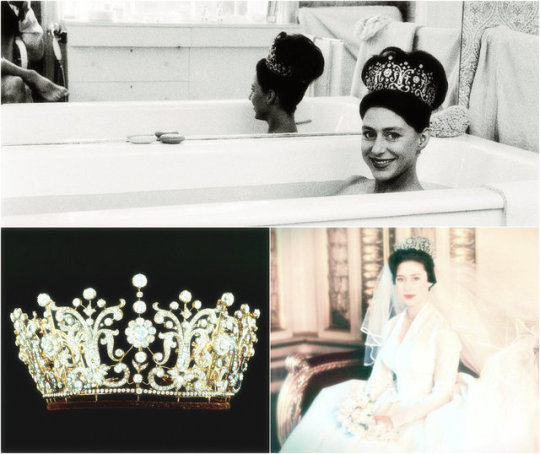

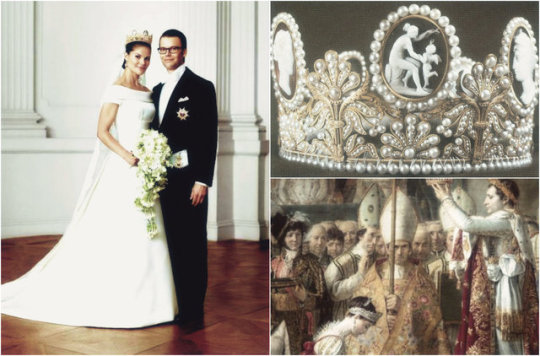

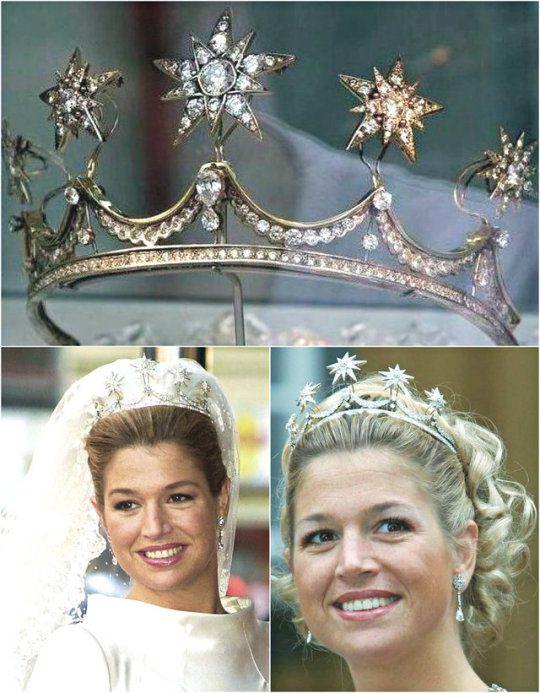

May Royal Wedding Photo Challenge: (Late) Day 5 - Favorite Tiaras worn by a Royal Brides & Explanations You Didn’t Ask For
1) The Queen Mary Fringe Tiara: This tiara was actually repurposed from a necklace of Queen Victoria’s in 1893. On Princess Elizabeth’s wedding day, the tiara snapped! Somehow, she didn’t panic and held it together while her mother figured out how to fix it, which, tbh is way better than I would have handled it. Not saying I would have burst into tears, flown into a rage, and threatened to sue everyone around me but...that’s not out of the realm of possibility. Luckily when Princess Anne wore it on her wedding day, nothing broke except her marriage later on because Mark Phillips is a scumbag.
2) The Poltimore Tiara: Legend has it that Princess Margaret bought this tiara for herself just before her wedding, which makes sense because she was an independant woman ahead of her time. I love how it’s so extra, just like Princess Margaret. Today its whereabouts aren’t really known. It went up for auction and sold for just under a cool mil.
3) The Khedive of Egypt Tiara: Okay so the story behind this is like super romantic?? Princess Margaret (not the one above, a different one, neice of King Edward VII) was on a royal tour with her parents, who were actually trying to set her sister Patricia up with Gustaf VI Adolf, who was the future King of Sweden. But he fell in love with Margaret instead! Which was okay and I don’t think Pat took it personally...I hope. Anyway so Margaret and Gustaf got engaged in Egypt, and the governor (it was an English colony/principality at that point) wanted to give them something super special because it was such an important part of their love story. So he gave them this, and now it’s commonly used for royal brides, like the then Princess Margrethe.
4) The Cameo Tiara: First of all I love cameo anything so that’s probably at least part of the reason I love this one so much. Second of all it allegedly can be traced back all the way to Napoleon and Josephine????? Crazy, right? It was passed down, and down, and down through to the house of Bernadotte. Queen Sylvia wore it on her wedding day to Carl Gutaf, which occured on the same date (though several years earlier, obvi) as her daughter’s wedding to Prince Daniel. So basically everything about it and them is amazine and wonderful and romantic.
5) The Diamond Daisy Tiara: This tiara is relatively new in tiara-years (you know, like dog years, but for sparkly diamonds for ya dome). It was only made in 1910 so it’s a lil baby tiara. It was a pretty minimal design and pattern and worked amazingly well with Mette-Marit’s wedding dress and I’m sorry but look how amazing it looks against her hair. Also it was used in a Cate Blanchett movie before it was purchased for the wedding so...that’s kind of cool. Mette-Marit wears this one a lot and it’s just adorable and gorgeous.
6) The Pearl Button Tiara: What can I say about Maxima’s wedding tiara, other than that it’s glamorous, it’s loud, and it’s just a little bit extra, just like Maxima. I have always and will always maintain that she is the most glamorous royal out there and this tiara is exactly that. She actually even modified it to be that dramatic too, because it’s usually adorned with pearls, not stars. Personally I have a weird obsession with stars so I love it this way. So sparkly...so starry...so glam.
7) Sapphire Parure Tiara: This is actually an interesting choice for Mabel to wear this way because she didn’t go all out...which is unlike her (see: everything else about her dress). I really love it dressed down like this. Maybe it’s because it also sort of resembles stars, or maybe it was just big without being too much (which again, is not usually a concept she even seems to think exists). Again, kind of interesting that she chose its simpler form because that’s just not her, plus it can get. So. Much. Bigger. It’s what Maxima wore to their coronation, and that’s not even the full size! You can see it on the bottom in all its splendor on Beatrix.
7 notes
·
View notes
Text
Earmarked paternity leave and relative income within couples
Digital Elixir
Earmarked paternity leave and relative income within couples
Jeppe Drudahl, Mette Ejrnæs, Thomas H. Jørgensen 28 July 2019
The stark difference in average earnings between men and women in many western countries hovers around 15%, drawing the attention of politicians and scholars for whom gender inequality is a central issue. Some countries have already implemented policies to reduce gender inequality in the labour market. Recent research suggests that non-transferable parental leave reforms show promise in the fight to reduce gender inequality.
One of the most important drivers of gender inequality in the labour market is the arrival of children. A recent study estimates that around 80% of the difference between the average labour-market income of men and women in Denmark relates to the presence of children (Kleven et al. forthcoming). The average labour market income of women is significantly and permanently reduced after childbirth, while the same is not the case for men. This is an emerging stylised fact in many western countries, including the US and the UK (Kleven et al. forthcoming).
Recently, the European Parliament proposed imposing on member countries the requirement that each parent have the right to two months of non-transferable or ‘earmarked’ paid parental leave. One of the main arguments for earmarked parental leave legislation is that it will decrease gender inequality in the labour market by increasing the incentives for fathers to take more parental leave.
Earmarked paternity leave
Earmarking a portion of paternity leave for fathers increases the amount of leave taken by men. Research based on data from the US, Norway, Sweden, and Canada shows that earmarked paternity leave tends to increase significantly the parental leave taken by fathers (Farré et al. 2019). The question remains whether increasing the paternity leave taken by men has any other consequences for the children and their parents.
Recent research has documented an increase in women’s labour market participation and earnings as a direct consequence of earmarked paternity leave reforms. Earmarked parental leave for fathers increased the labour supply of mothers (Dunatchik et al. 2019), increased women’s earnings from earmarked paternity leave (Johansson 2010, Andersen 2018), and had large, long-lasting effects on gender roles as well as a significant increase in the time spent by women doing paid work in the labour market (Patnaik, forthcoming).
More mixed are the conclusions from research on the consequences for family formation and dissolution. Marital stability has been found significantly reduced as a result of earmarked paternity leave in Sweden (Avdic and Karimi 2018) while no effect has been found in Norway (Dahl et al. 2014) (Cools et al. 2015). One study found that earmarked paternity leave reduced fertility rates (Farré and González 2019); but a positive association between parental leave take-up and fertility has also been documented (Duvander et al. 2010).
In new research, we analyse the effect of earmarked parental leave for fathers on the relative income of women within couples (Druedahl et al. 2019). This is particularly interesting because women’s intra-household share of income likely reflects their bargaining power within the household. In turn, if policy reforms that include earmarked paternity leave shift the income share within households, such reforms have the potential to create permanent shifts in norms, in time allocation within the household, and thus to gender inequality more broadly.
Earmarked paternity leave and relative income within households
We use Danish register data together with a 1998 reform to the parental leave scheme. The reform increased the earmarked paternity leave for fathers to two weeks without changing the parental leave available to mothers. Fathers of children born before 15 October 1997 had two weeks of earmarked paternity leave (often used immediately after childbirth). Fathers of children born on or after 15 October 1997 had a total of four weeks of earmarked paternity leave.
Figure 1

First, we confirm the findings of the existing literature that earmarked paternity leave increases the amount of leave taken by fathers. Figure 1 illustrates the distribution of the number of weeks taken by first-time fathers who had their firstborn child before the reform (in the years 1995-1997), compared to first-time fathers who had their firstborn after the reform (in the years 1998-2001). We see a substantial shift from the share of first-time fathers taking two weeks of leave to fathers taking four weeks of leave. This response looks particularly large when we take into account the fact that fathers wanting to use this option had to take their leave in weeks 25 and 26 after childbirth. Likewise, we also find evidence of a child penalty for mothers, whose share of income decreases from 42% of household income before birth to around 32% one year after giving birth.
Second, we use this reform to estimate the impact on women’s labour income share within the household stemming from two weeks of increased earmarked paternity leave. We find a significant positive effect, suggesting that mothers’ share of labour income increased around 1.2 percentage points after the reform.
The increase in women’s labour income share arises because women’s labour income increases significantly while men’s labour income is scarcely affected. The effect on women’s labour income is relatively long lasting and remains significantly positive until the firstborn child reaches eight years, as illustrated in Figure 2. This suggests that there might be scope for shifting gender norms through earmarked parental leave reforms like the one proposed by the European Parliament.
Figure 2

We find that the effect is primarily driven by couples in which the woman was employed in the private sector prior to the first child’s birth. Fathers in this group increased their parental leave take-up by approximately twice as much as fathers in the reference group in which mothers worked in the public sector prior to childbirth. This result is in line with the notion that no long-run effects from taking parental leave exist for women employed in the public sector prior to childbirth (Nielsen et al. 2004).
Our results suggest that even a relatively small increase in earmarked parental leave for fathers can affect the parental leave take-up and subsequent impact on the distribution of labour market income within households. The persistence of the effect indicates that such reforms could shift gender norms and create more permanent consequences. Other research has suggested that norms are hard to change and that the effects of earmarked paternity leave are short-run (Ekberg et al. 2013). An interesting avenue for future research would be to investigate the long-term impact of earmarked parental leave.
The implementation of the European Parliament’s proposal of two months earmarked parental leave would lead to a substantial increase in earmarked leave for fathers in many EU countries and enable future research on the impact of earmarked parental leave outside a Scandinavian welfare model.
References
Andersen, S H (2018), “Parental Leave and the Motherhood Penalty: New Causal Evidence”, Journal of Marriage and Family 80(5): 1125-1143.
Avdic, D and A Karimi (2018) “Modern Family? Paternity Leave and Marital Stability”, American Economic Journal: Applied Economics 10 (4): 283-307.
Cools, S, J H Fiva, and L J Kirkebøen (2015) “Causal Effects of Paternity Leave on Children and Parents”, Scandinavian Journal of Economics 117 (3): 801-828.
Dahl, G B, K V Løken, and M Mogstad (2014) “Peer Effects in Program Participation”, American Economic Review 104 (7): 2049-2074.
Druedahl, J, M Ejrnæs, and T H Jørgensen (2019) “Earmarked Paternity LEave and the Relative Income within Couples”, Economics Letters 180: 85-88.
Dunatchik, A and B Ozcan (2019) Reducing Mommy Penalties with Daddy Quotas, Working paper, London: LSE working paper.
Duvander, A-Z, T Lappegård, and G. Andersson (2010) “Family policy and fertility: fathers’ and mothers’ use of parental leave and continued childbearing in Norway”, Journal of European Social Policy 20 (1): 45-57.
Ekberg, J, R Eriksson, and G Friebel (2013) “Parental leave – A policy evaluation of the Swedish ‘Daddy-Month’ reform”, Journal of Public Economics 97: 131-143.
Farré, L, and L González (2019) “Does Paternity Leave Reduce Fertility?”, Journal of Public Economics 172: 52-66.
Johansson, E-A (2010) The effect of own and spousal parental leave on earnings. Working Paper, Institute for Labour Market Policy Evaluation (IFAU).
Kleven, H, C Landais, and J E Søgaard (forthcoming) “Children and Gender Inequality: Evidence from Denmark”, American Economic Journal: Applied Economics.
Kleven, H, C Landais, J Posch, A Steinhauer, and J Zweimuller (forthcoming) “Child Penalties Across Countries: Evidence and Explanations”, AEA Papers & Proceedings.
Nielsen, H S, M Simonsen, and M Verner (2004) “Does the Gap in Family Friendly Policies Drive the Family Gap?”, Scandinavian Journal of Economics 106 (4): 721-744.
Patnaik, A (forthcoming) “Reserving time for daddy: The consequences of fathers’ quotas.” Journal of Labor Economics.
Earmarked paternity leave and relative income within couples
from WordPress https://ift.tt/2KbFPMA
via IFTTT
0 notes
Note
Isn't it a bit tone-deaf for Mette-Marit to post pictures of them on a ski holiday when most of the world is locked inside their homes? Ski holidays are how the virus spread through Europe. I like her, but she doesn't seem to think carefully about what she posts. Like, they say she's too sick to work due to her lung condition, but she's always posting pictures of ski trips, hikes and other outdoor adventures with friends. I'm sure turning up for royal engagements is easier on the lungs.
Ok look. We can talk about whether it was appropriate but I have to stop you right here: “Like, they say she’s too sick to work due to her lung condition, but she’s always posting pictures of ski trips, hikes and other outdoor adventures with friends. I’m sure turning up for royal engagements is easier on the lungs.”
This is low, anon. Maybe you don’t realise but Mette Marit’s illness will more than likely kill her. And the chances are it will kill her pretty soon. 66% of people who have it will die within 10 years. To compare, for breast cancer only about 24% of those diagnosed will die within 10 years. She probably won’t live to see all her children marry. She won’t get to see her grandchildren grow up. She may not see her husband become king. And it is incurable. Eventually she won’t be able to walk a few steps without losing her breath. So if she wants to make the most of being at the beginning of her condition and having it under control then let her. And if she wants to share it so that people don’t think she’s critically ill and still feel connected to her life, let her. While she still can. Also:
Exercise is a recognised form of management of pulmonary fibrosis
Many people early in their diagnosis can carry out more physical activities with supplemental oxygen supplies
It’s not true that she’s “always” posting about hikes and ski trips. In the last six months she’s posted about some form of exercise three times: 1) she went skiing, 2) she mentioned the family were skiing but she was only photographed at the lodge, we don’t know if she participated and 3) she went for a walk.
None of us are MM’s lungs so we can’t know what’s best for her but if you were sick do you think it would be easier to go to a job where your every move is caught on camera, your every word is scrutinised and shared across the country, and you have to follow a strict schedule or would you rather go for a hike with friends where you can sit down for a break for as long as you want and leave whenever you want?
I’m not trying to scare people here. Mette Marit is currently healthy and being looked after. Rest assured there is no reason to think she will drop dead tomorrow. I don’t usually like talking about all this because she has young kids and it doesn’t feel right to pry into her health. But on this one occasion I had to say something. This is serious. I can’t imagine that if she was diagnosed with breast cancer - which would be less dangerous - people would be suggesting she was over-exaggerating and should do more work and spend less time on “outdoor adventures.”
40 notes
·
View notes
Text
Prince Harry & Meghan Markle’s love: a dilemma for her detractors...
It is actually quite disgusting seeing and reading the vile abuse levied towards Meghan Markle on the ‘mail online / daily mail’ website. You only have to read the commentary sections on articles Meghan Markle related to fully understand the level of base prejudice that resides on that site. The scurrilous slurs, insinuations and often times potential libel, are racially motivated. The racism both the outright & subtle shines right through. I feel it has now become a sadistic sport of sorts for this so-called National newspaper website to induce as much hysteria as possible from its commentators as the website churn out article after article and comment pieces (mainly unfavourable) on anything Meghan related on an almost daily basis. One could be forgiven for thinking they have an agenda to fulfill and my goodness don't they just pursue it with a vigour and vengeance. I mean it's like: ‘how dare a woman of colour fall in love and how dare she conduct a mutual relationship with a man, who just happens to be a Prince of the realm’... For the warped minds out there, they find the fact that this relationship is actually happening, despicable. The constant disbelief from said quarters, the malicious rage is all too palpable - even In this twentyfirst century nevertheless.
How do these twiits justify the obsessive hate they spew you may ask? Oh, it's the usual blather - she's ‘unsuitable’ because she's an actress oh dearie me! Well then, the late Grace Kelly was an actress, she went on to become Her Serene Highness of the Principality of Monaco, she of course, where required - partook in sexy love scene. And today still hailed & revered in all cases circles. Lord Frederick Winsor a Royal also in line to the British throne, is married to an actress. And in a world where a Prince of Sweden is married to a glamour model who has done full frontal nude, Ms Markle’s haters would have us all faint with the vapours for her tame romantic/sexy scenes with her onscreen love interests. No full nudes and nothing untoward. Scenes, which by any standard, are, in this day & age, par for the course on almost all TV, theatre, Big Screen movies & Drama that are rated over (12). But hey, ‘it's only the mixed-race woman so let's continuously denigrate her to hell & back’. 'If we scream porn star enough times, the mud wil stick’. Really?? Yes, this is the level some have sunk to, sadly. She's a divorcee, yes, but so is the immediate heir to the British throne, as is his current wife, formerly Camilla Parker Bowles . The current Queen of Spain was once a divorcee. As was Princess Michael of Kent before she too married into the British Royal Family.
Ms Markle is a foreigner cum commoner her detractors insist on reminding us. Ah Ha! So Meghan Markle is indeed an American based for sometime now in Canada. The Queen’s eldest grandson is married with children to a Canadian. Denmark’s immediate heir to the throne, Crown Prince Frederik is married to an Australian commoner, formerly Mary Donaldson whom he'd met in a pub in Sydney,
Just like to add that the delightful Mette-Marit, Norway’s Crown Princess was once a commoner single parent before she too found her Prince. Plus Britain’s very own third in line to the throne, Prince William is also married to a commoner, the Duchess of Cambridge, formerly Kate Middleton.
I guess the point I am trying to make here with all those mentioned above is that people, commoners of ordinary backgrounds are now marrying into the Royal dynasties of Europe - A move never allowed before in the past. Monarchies are moving with the modern times. Love reigns supreme, and where you are from and Class background is no longer and shouldn't ever be an impediment to falling in love with and marrying someone who just happens to be royalty.
No, what really ought to matter is compatibility. Mutual love, passion, respect and common interests. Both Harry & Meghan obviously have feelings for each other, they also share a background in humanitarian issues and raising awareness. Yes, Meghan Markle was long involved in charitable work long before she had even met Prince Harry. And haa made it absolutely clear that aspect of things was one of her missions in life and will remain so. Not satisfactory enough for her detractors though as they persist in branding her as an "opportunistic” villain forcing herself on a Prince. Which is frankly absurd.
In actual fact, Ms Markle is an accomplished lady, a University Graduate with a Major in International Relations & Theatre. She is also a gifted calligrapher and financially supported herself whilst at University by doing bits of calligraphy here and there. She also spent time working at the American Embassy in Argentina, before deciding to focus on a career as an actor. Again, her detractors try to understate her achievements. It appears to just Zoom over their heads the fact that her education background is easily verifiable. And that any discrepancy in her resumé would have been exposed by the exposers in chief of the moment. Uhmm, I meant the "investigative journalism” (sarcasm) undertaken by this particular mainstream National newspaper website that affords the vile deplorables, and stuck up Snobs everywhere the chance to congregate and spout bile at will that feeds into their obsessive Meghan hate.
Again, I repeat: that particular newspaper website would've been first in line to throw down the gauntlet, given their dubious agenda.
Another baffling thing that continues to puzzle me is the moniker the Meghan detractors furnished her with.."Media Meg”... Err, hello: she is in the media by virtue of her job as an actress and her role as an humanitarian campaigner. Both require a medium of exposure and it would be practically impossible not to have some form of media interest in her line of work, anyway.
What exactly do the detractors expect, in a line of work she's been involved with since before her relationship with Harry began ?
The paparazzi problem; Meghan Markle gets criticised if she's papped taking a stroll to her yoga class. Or simply going about her daily business, the ordinary things people would normally do. It is not her fault the media paps have begun taking even more of a keen her interest in her comings and goings than ever. It's a way of life celebrities in general have to live with or at least adapt to. As a matter of fact, paparazzi and press intrusion is a subject matter that blights the life of royalty just the same as celebrities when the opportunity arises. Which thankfully isn't very often but it does happen. Take for instance the Duchess of Cambridge, pictured in a state of undress at a private villa during a holiday with her husband. Illicit (some might argue illegal even) these were pap pics taken by the paparazzi and sold to magazine outlets a few years ago. And the now infamous Sophie Rhys-Jones newspaper scoop. Photo exhibits of the then Sophie Rhys-Jones now Countess of Wessex. Photo shots of a clearly jovial Sophie, her bare breasts exposed in a clinch with the TV presenter Chris Tarrant. Old photos released just weeks before her wedding to the Queen’s youngest son, Prince Edward. Then there was that newspaper sting in which Sophie (now the Countess of Wessex after her marriage to Prince Edward) was disgracefully set up by an undercover journalist posing a rich Arabian Sheikh. She was caught on tape making disparaging remarks about political figures, and members of the royal family. Completely going against Royal Protocol.
You see we are all human with flaws. Meghan is a human being with feelings. She has dragged herself up, gotten herself a good education and works. Now she gives back to society in her own way. And yet she has to endure the pure evil bile with the unpleasant undercurrents of racism added to touch. She's of mixed-race heritage her mum is black and her dad white. It doesn't make her any less of a human being or less deserving of love wherever & however that comes by. But to listen to the twisted creatures that dedicate an enormous amount of time and energy in pathetic attempts to ruin her reputation and bring her down, to read the sickening bile these rabid bunch of deplorables from across the Atlantic and elsewhere spew day in and day out about Ms Markle, says more about them than her. She can take heart in the fact that out in the real world the majority of people here in Britain are decent people with no time for the base prejudice seen displayed on fringe websites.
Ms Markle is an only child of her mother, but is constantly blighted by the poor life choices and display of envy by her half siblings. Step siblings she lost contact with since early childhood. Children to her dad from a different marriage to her mum’s. Her parents separated when she was six years old. And yet these half siblings claim to be experts on her current life, sellIng fake tales to the press including childhood photos, when they have no first hand knowledge of her personal life and relationship and how it is panning out, other than what they read or make up themselves. One particularly nasty half/step sister spends her time on Twitter ranting poisonous rubbish about Mrghan. Ah well, I suppose it goes with the territory with some step siblings. After all, there are strong rumours the North Korean tyrant Kim Jong Un did away with his half brother. And it is blatantly obvious Barack Obama’s half brother has been a pest in his side throughout his Presidency, sucking up to Donald Trump of all people and helping spread the vile birther conspiracy. I hear the kraken’s raised its ugly head again recently.
10 notes
·
View notes